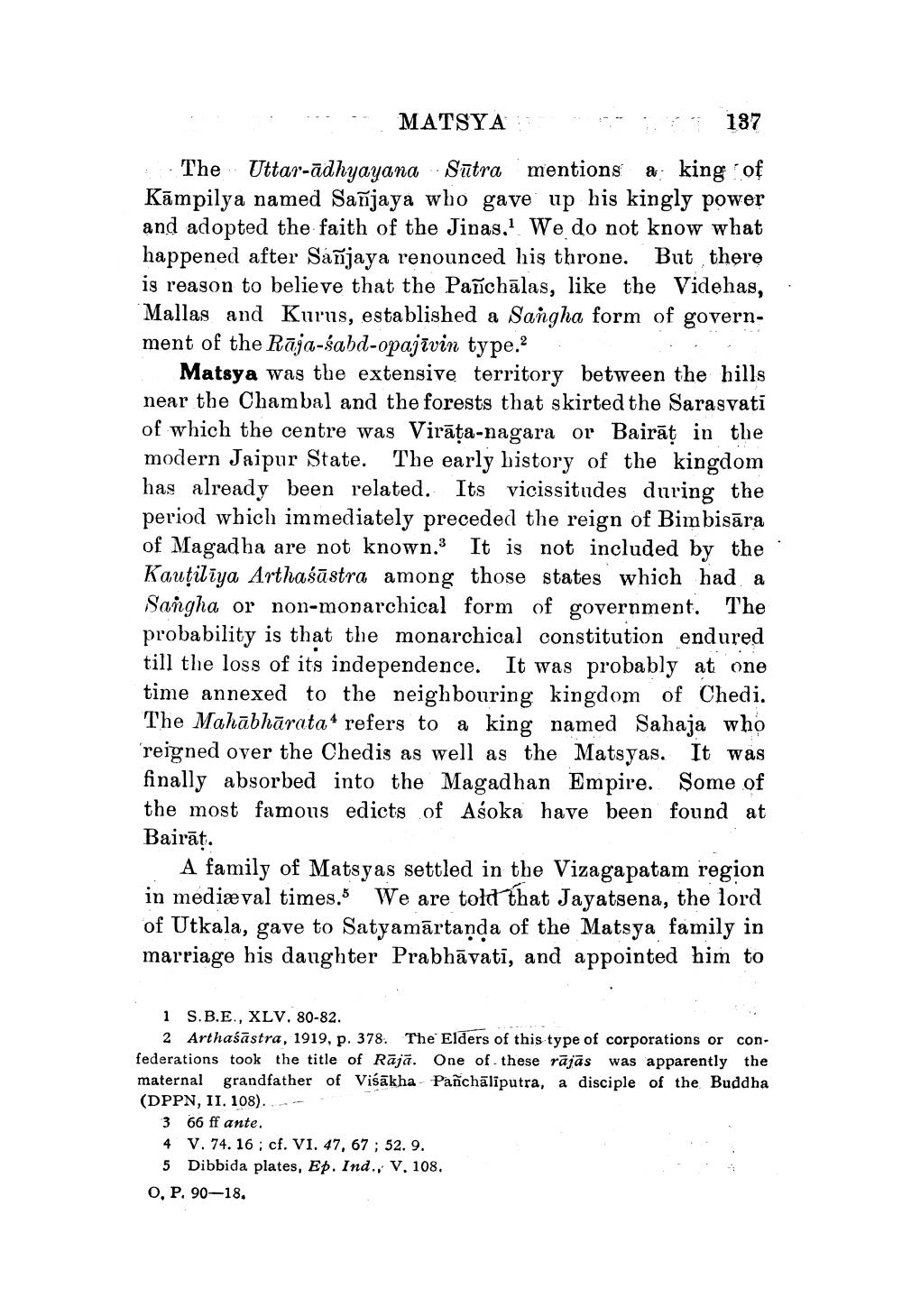________________
MATSYA
137 The Uttar-ādhyayana Sūtra 'mentions & king of Kāmpilya named Sanjaya who gave up his kingly power and adopted the faith of the Jinas,! We do not know what happened after Sanjaya renounced his throne. But there is reason to believe that the Pañchālas, like the Videhas, Mallas and Kurus, established a Sangha form of government of the Raja-sabd-opajīvin type.
Matsya was the extensive territory between the hills near the Chambal and the forests that skirted the Sarasvati of which the centre was Virāța-nagara or Bairāt in the modern Jaipur State. The early history of the kingdom has already been related. Its vicissitudes during the period which immediately preceded the reign of Bimbisāra of Magadha are not known. It is not included by the Kauțilīya Arthaśāstra among those states which had a Sangha or non-monarchical form of government. The probability is that the monarchical constitution endured till the loss of its independence. It was probably at one time annexed to the neighbouring kingdom of Chedi. The Mahābhārata* refers to a king named Sahaja who "reigned over the Chedis as well as the Matsyas. It was finally absorbed into the Magadhan Empire. Some of the most famous edicts of Asoka have been found at Bairāt.
A family of Matsyas settled in the Vizagapatam region in mediæval times. We are told that Jayatsena, the lord of Utkala, gave to Satyamārtanda of the Matsya family in marriage his daughter Prabhāvatī, and appointed him to
1 S.B.E., XLV. 80-82.
2 Arthaśāstra, 1919, p. 378. The Elders of this type of corporations or confederations took the title of Rājā. One of these rājās was apparently the maternal grandfather of Viśākha Pañchālīputra, a disciple of the Buddha (DPPN, II. 108).. .
3 66 ff ante. 4 V. 74. 16; cf. VI. 47, 67 ; 52.9. 5 Dibbida plates, Ep. Ind., V. 108. O, P. 90-18.




